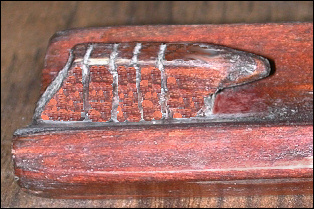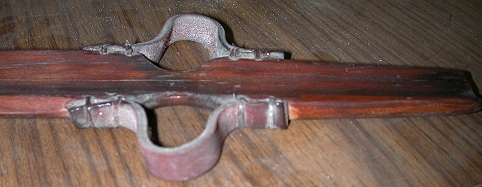

To many people, the bow-and-arrow seems to be the ultimate symbol of Native Americans. Yet, in the expanse of time, the bow-and-arrow is a late comer, probably appearing less than 2,000 years ago in the Chihuahuan Desert. So, what preceded it? Discard any mental picture you might have of a hunter poking at a mammoth or bison with a hand-held spear—instead, think atlatl!
Think WHAT? OK, then call it a "spear thrower". This technological wonder was used throughout the New and Old Worlds. It consists of a flattened piece of wood with a handle on one end and a projecting hook on the other end. The hook fits into a socket at the end of a spear, stabilizing the connection as the atlatl is used. By utilizing this instrument to increase the effective length of the throwing arm, the speed and force of the spear can be more than doubled. For over 7,000 years, the atlatl sustained the hunters and gatherers of the Chihuahuan Desert.

Listen to the Audio (mp3 format) as recorded by KTEP, Public Radio for the Southwest.
Contributor: Arthur H. Harris, Centennial Museum, University of Texas at El Paso.
Desert Diary is a joint production of the Centennial Museum and KTEP National Public Radio at the University of Texas at El Paso.

A modern atlatl constructed similarly to those of the distant past, courtesy of Travis Mogford.

Detail of the atlatl hook. The hook fits into a socket at the end of the spear. Atlatl courtesy of Travis Mogford.

Detail of the atlatl handle area, courtesy of Travis Mogford.
Wormington, H. M. 1956. Prehistoric Indians of the Southwest. Denver Museum of Natural History, Popular Series No. 7, 3rd ed., Denver. 191 pp.